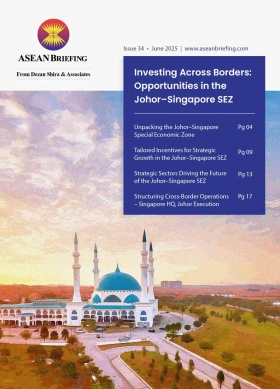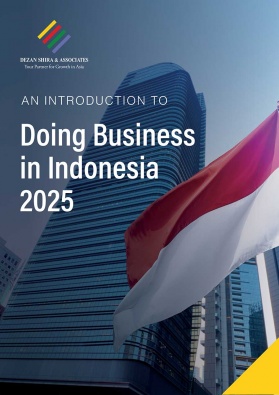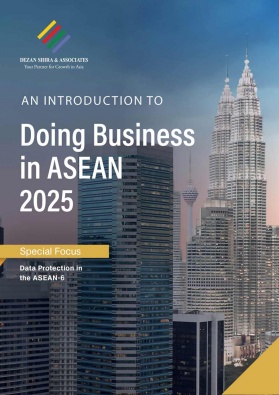ASEAN Nations Mobilize Ahead of U.S. Tariff Deadline
The United States is set to activate a sweeping tariff regime against Southeast Asian countries on July 9, 2025, imposing duties ranging from 10 to 49 percent depending on the country and product. The move has triggered a wave of responses across ASEAN, with governments moving urgently to defend their export sectors. While Malaysia is pushing for regional unity, most ASEAN members are prioritizing domestic solutions — some securing last-minute concessions, others recalibrating trade exposure. Each country is taking a distinct approach as the deadline nears.
Singapore takes a technical and institutional approach
Singapore is among the least exposed but one of the most vocal. Rather than negotiating exemptions, it has established a national task force chaired by Deputy Prime Minister Gan Kim Yong to assess risks in key sectors like semiconductors and pharmaceuticals. Prime Minister Lawrence Wong has called the U.S. action “damaging to the rules-based system.” The government is preparing sectoral support schemes and closely monitoring U.S. decisions, with the option of re-engaging diplomatically once the policy is in effect.
Indonesia races to finalize a strategic trade proposal
With substantial export exposure, Indonesia has proposed a trade and investment package exceeding US$34 billion in value. The plan includes major U.S. aircraft and wheat purchases in exchange for tariff relief, along with U.S. access to Indonesian critical minerals such as nickel and copper. The proposal, now under review in Washington, is Jakarta’s attempt to avoid a worst-case outcome on July 9. Indonesia’s pitch positions it as a key U.S. partner in reshaping supply chains — if accepted in time.
Vietnam becomes the first to reach a deal
Vietnam has already concluded a bilateral agreement that shields much of its export base. Under the new arrangement, average tariffs will drop to 20 percent, though a 40 percent rate still applies to goods suspected of being transshipped from China. The Vietnamese government has responded by enhancing its customs enforcement regime. While the compromise doesn’t eliminate all risk, it ensures Vietnam enters the post-July 9 landscape with a more favorable footing than its neighbors.
Malaysia balances regional leadership with domestic caution
As ASEAN Chair, Malaysia is leading the bloc’s coordination efforts, urging members to resist retaliation and pursue diplomacy. Prime Minister Anwar Ibrahim is pushing for a collective engagement with Washington, though such a summit is unlikely to happen before the deadline. Domestically, Malaysia is evaluating the impact on its electronics and palm oil industries. The absence of a bilateral deal suggests Malaysia is playing a longer game, using its leadership role to manage both internal and external dynamics.
Thailand focuses on domestic buffering instead of U.S. engagement
Thailand is not actively negotiating with the U.S. ahead of July 9. Instead, authorities are deploying internal economic stimulus to support vulnerable export sectors such as auto parts and agro-processing. These include low-interest loans, tax deferrals, and targeted subsidies.
The Philippines monitors the situation without provoking action
With relatively modest exposure compared to larger exporters, the Philippines has adopted a wait-and-see stance. There are no confirmed bilateral talks underway, though the country is engaged in ASEAN-level coordination. Internal discussions are focused on contingency planning in case the U.S. tariffs escalate or extend to new sectors. For now, Manila appears to be holding back, preferring to assess how regional and global reactions unfold after July 9.
Cambodia and Laos prepare to absorb short-term shock
Cambodia and Laos are among the most vulnerable and least equipped to negotiate exemptions. Tariff levels as high as 49 percent will directly affect key sectors like garments and basic electronics. Lacking the leverage for bilateral deals, both governments are relying on ASEAN’s multilateral framework to argue for eventual relief. In the meantime, they are conducting economic impact assessments and preparing mitigation plans with development partners.
Myanmar operates under constraints with minimal diplomatic bandwidth
Myanmar’s political and economic isolation continues to limit its ability to engage with Washington. Although the country is technically included in the U.S. tariff schedule, there have been no visible efforts to negotiate or respond. ASEAN’s task force includes Myanmar, but its participation remains largely symbolic. Any post-July 9 adjustments are likely to come through broader ASEAN channels rather than direct engagement.
Brunei remains quiet but may play a diplomatic role post-deadline
Brunei, with limited export exposure and a 24 percent tariff, has not issued any public response ahead of July 9. The government is conducting internal reviews, particularly around petrochemical exports, but has avoided pursuing exemptions. Instead, Brunei has aligned itself with ASEAN’s multilateral approach, backing Malaysia’s diplomatic leadership. While its small trade footprint reduces the urgency of immediate action, Brunei may emerge as a neutral facilitator in post-deadline discussions, leveraging its non-confrontational posture to support bloc-wide diplomatic engagement.
ASEAN’s unity framework is tested by national imperatives
ASEAN’s response to the July 9 deadline is being coordinated through a joint task force established during the Kuala Lumpur Summit. While the mechanism remains intact, individual members have diverged in strategy based on their exposure and economic leverage. Vietnam’s early deal, Indonesia’s direct proposal, and Malaysia’s diplomatic balancing act reveal how national interests are shaping the regional narrative. The idea of a unified ASEAN voice is still alive, but heavily strained.
What comes after July 9 for ASEAN and global trade
Once the U.S. tariffs take effect, the window for negotiation does not close — it shifts. Many ASEAN governments are preparing for the possibility of post-implementation carve-outs, sector-specific exemptions, or future re-engagements. Malaysia’s initiative to call for a bloc-wide summit with Washington could gain traction after the dust settles. Others, like Singapore and Thailand, may use this period to build internal resilience before re-entering talks. There is also growing speculation about whether ASEAN will escalate the issue to the World Trade Organization or seek support through RCEP and other multilateral platforms.
About Us
ASEAN Briefing is one of five regional publications under the Asia Briefing brand. It is supported by Dezan Shira & Associates, a pan-Asia, multi-disciplinary professional services firm that assists foreign investors throughout Asia, including through offices in Jakarta, Indonesia; Singapore; Hanoi, Ho Chi Minh City, and Da Nang in Vietnam; and Kuala Lumpur in Malaysia. Dezan Shira & Associates also maintains offices or has alliance partners assisting foreign investors in China, Hong Kong SAR, Mongolia, Dubai (UAE), Japan, South Korea, Nepal, The Philippines, Sri Lanka, Thailand, Italy, Germany, Bangladesh, Australia, United States, and United Kingdom and Ireland.
For a complimentary subscription to ASEAN Briefing’s content products, please click here. For support with establishing a business in ASEAN or for assistance in analyzing and entering markets, please contact the firm at asean@dezshira.com or visit our website at www.dezshira.com.
- Previous Article 印尼转让定价合规:2025年税务审计风险警示
- Next Article Thailand’s 2026 Plug-in Hybrid Incentives: A New Tax Strategy








